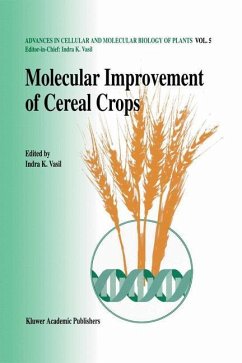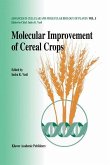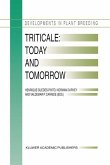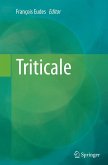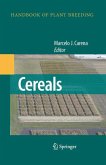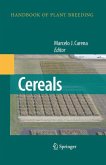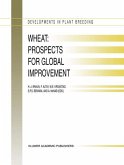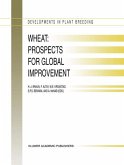From the pre-historic era to modern times, cereal grains have been the most important source of human nutrition, and have helped sustain the increasing population and the development of human civilization. In order to meet the food needs of the 21st century, food production must be doubled by the year 2025, and nearly tripled by 2050. Such enormous increases in food productivity cannot be brought about by relying entirely on conventional breeding methods, especially on less land per capita, with poor quality and quantity of water, and under rapidly deteriorating environmental conditions.
Complementing and supplementing the breeding of major food crops, such as the cereals, which together account for 66% of the world food supply, with molecular breeding and genetic manipulation may well provide a grace period of about 50 years in which to control population growth and achieve sustainable development. In this volume, leading world experts on cereal biotechnology describe the production and commercialization of the first generation of transgenic cereals designed to substantially reduce or prevent the enormous losses to cereal productivity caused by competition with weeds, and by various pests and pathogens, which is an important first step in that direction.
Complementing and supplementing the breeding of major food crops, such as the cereals, which together account for 66% of the world food supply, with molecular breeding and genetic manipulation may well provide a grace period of about 50 years in which to control population growth and achieve sustainable development. In this volume, leading world experts on cereal biotechnology describe the production and commercialization of the first generation of transgenic cereals designed to substantially reduce or prevent the enormous losses to cereal productivity caused by competition with weeds, and by various pests and pathogens, which is an important first step in that direction.
`This is the most comprehensive text currently available on cereal tarnsformation and appears at an opportune time when transformation systems are established for all the major cereals, although these are far from routine. It will undoubtedly become an important source for research scientists who are working on aspects of cereal transformation. It will also be of wider interest to those working on cereal production and utilization and indeed to anyone who wishes to find out why there is currently so much excitement about the genetic engineering of cereals.' Plant Growth Regulation, 30 (2000) `The book will certainly be useful to plant scientists, breeders, biotechnologists, and agronomists interested in the improvement of cereals. It provides a wonderful up-to-date comprehensive overview of the field, with contributions of value to the specialist and also suitable to a broader readership.' Plant Science, 158 (2000)
`This is the most comprehensive text currently available on cereal tarnsformation and appears at an opportune time when transformation systems are established for all the major cereals, although these are far from routine. It will undoubtedly become an important source for research scientists who are working on aspects of cereal transformation. It will also be of wider interest to those working on cereal production and utilization and indeed to anyone who wishes to find out why there is currently so much excitement about the genetic engineering of cereals.'
Plant Growth Regulation, 30 (2000)
`The book will certainly be useful to plant scientists, breeders, biotechnologists, and agronomists interested in the improvement of cereals. It provides a wonderful up-to-date comprehensive overview of the field, with contributions of value to the specialist and also suitable to a broader readership.'
Plant Science, 158 (2000)
Plant Growth Regulation, 30 (2000)
`The book will certainly be useful to plant scientists, breeders, biotechnologists, and agronomists interested in the improvement of cereals. It provides a wonderful up-to-date comprehensive overview of the field, with contributions of value to the specialist and also suitable to a broader readership.'
Plant Science, 158 (2000)

